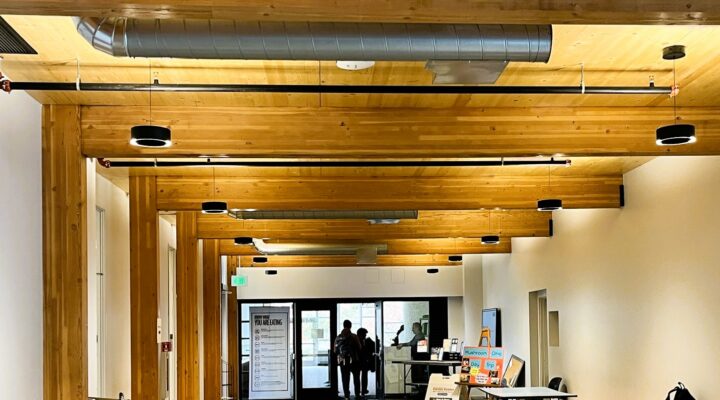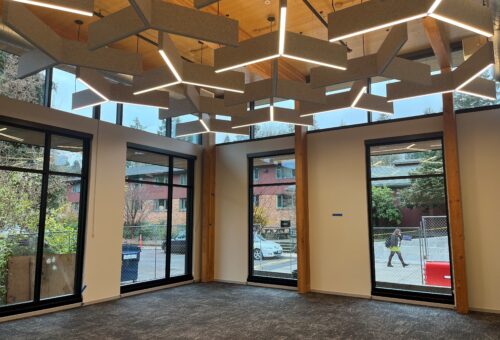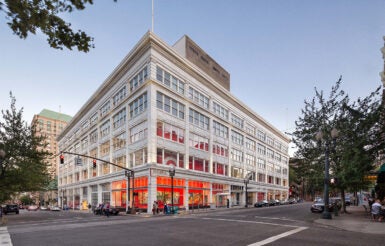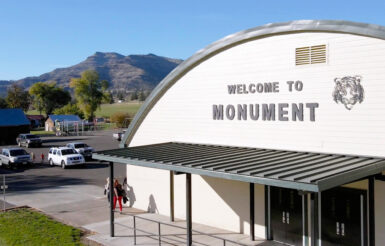Portland college furthers their sustainability commitment with a highly efficient HVAC system
When it came time to renovate the Stephanie Fowler Student Center, the administrators at Lewis & Clark College in Portland, Ore., placed sustainability front and center. Designed to be the “heart of the campus” according to Lewis & Clark president Robin Holmes-Sullivan, the renovation designs included the most efficient HVAC system available to provide optimal thermal comfort for the newly constructed third floor of the building, a 6,370 sq. ft. multipurpose area that includes a conference room, two meeting rooms, and a technology classroom.
With all options on the table, Lewis & Clark College determined that the very high efficiency dedicated outdoor air system (very high efficiency DOAS) would provide their students, faculty, and staff with enhanced comfort and healthy air, while reducing energy use by more than half, when compared to a standard, code-minimum HVAC approach.
Project Overview
High-performance HVAC offers sustained efficiency and comfort
To achieve the highest standards of energy efficiency and building IAQ, Lewis & Clark College utilized highperformance HVAC equipment and design principles, including:
- A DOAS approach that decouples (i.e., separates) heating and cooling from the ventilation equipment.
- High-performance electric heat pump that meets ENERGY STAR® performance standards.
- High-efficiency heat recovery ventilator (HRV) that recovers more than 82% of the sensible heat from the stale indoor exhaust air, while delivering 100% fresh, filtered outdoor air at neutral temperatures to the building.
- Right-sized heating and cooling equipment.
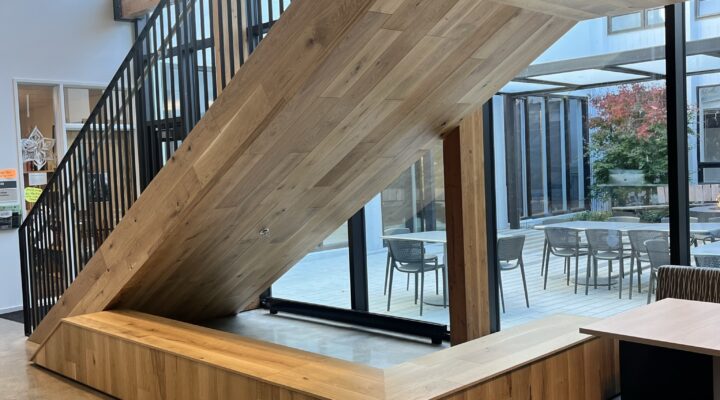
Better HVAC creates an enhanced learning environment
Despite being open 24 hours a day, 7 days a week, all year long, the Stephanie Fowler Student Center’s very high efficiency DOAS approach has demonstrated remarkable indoor temperature consistency, maintaining a uniform 70 F setpoint across the past 10 months of monitoring. Regardless of the changing temperatures and weather conditions outside, students on the third floor of the student center know they can expect comfortable classrooms and common areas any time of year.
“Building users don’t realize that the air is closely monitored to make sure air changes and temperature regulation holds closely within the parameter setpoints,” said David Ernevad, Associate Vice President for Facilities at Lewis & Clark College. “The new system and its continuous air-quality monitoring has functioned flawlessly. It was easy to get the controls and indoor air experience right from the start, and it has functioned extremely well since installation, requiring very little effort from maintenance staff.”
Results
In addition to reducing overall building energy use, the new HVAC system offers a variety of benefits to building occupants and operators, including:
- Better IAQ due to filtered 100% outside air coming into the space, with less recirculation between rooms than a standard HVAC approach.
- Increased occupant comfort through improved temperature stability and the ability to create zones with unique temperature controls.
- Increased occupant productivity.
- Reduced energy bills.
